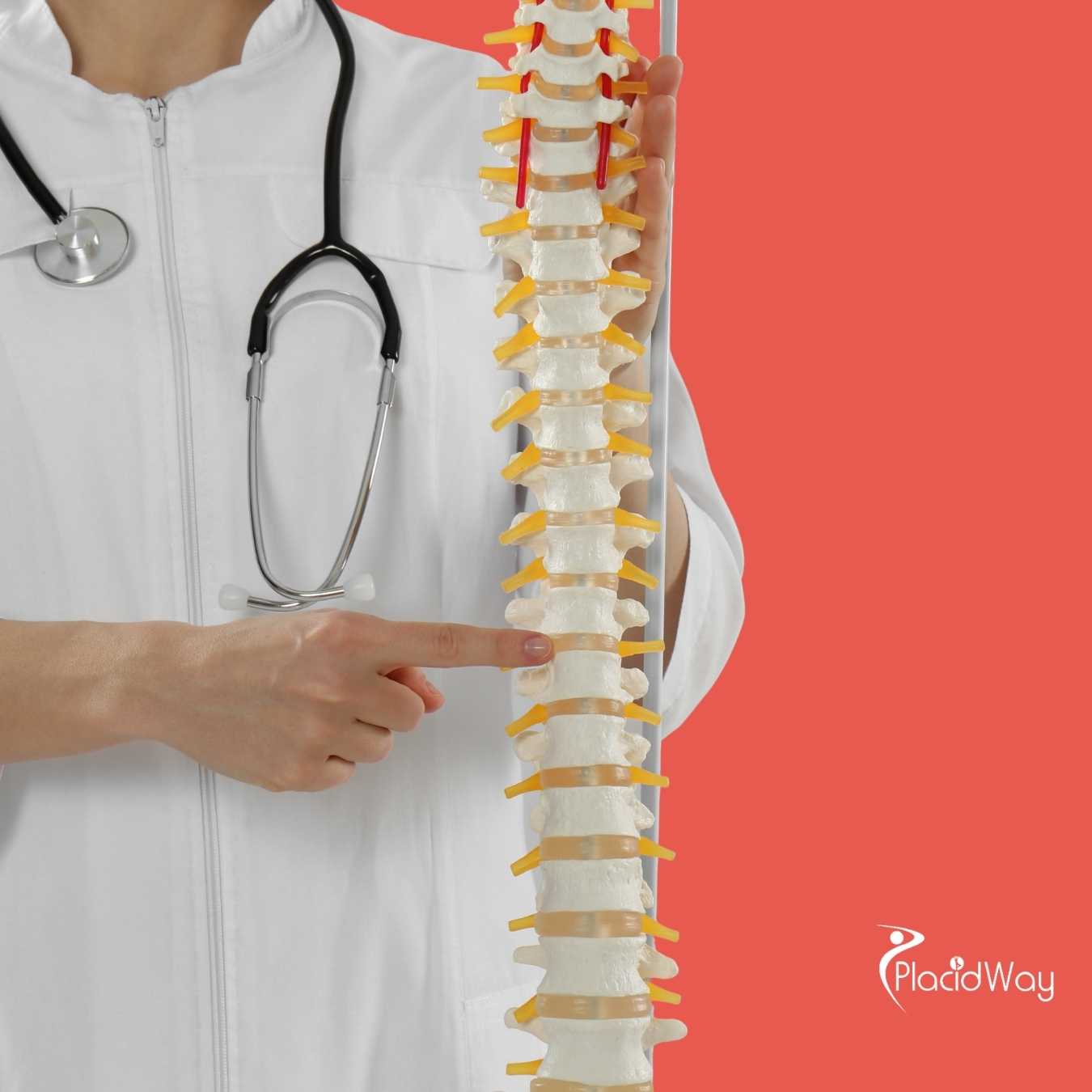Stem Cell Therapy for Spinal Cord Injury: Pricing, Options, and Clinics
.png)
When confronting a spinal cord injury (SCI), the journey towards recovery is often challenging, filled with complex medical decisions and emotional resilience. For many, hope lies in cutting-edge advancements like stem cell therapy, a regenerative medicine approach that holds the promise of repairing damaged tissues and potentially restoring lost function. This innovative treatment offers a new perspective for individuals seeking to improve their quality of life after an SCI, sparking intense interest and numerous questions among patients and their families worldwide. One of the most critical queries often revolves around the financial feasibility of such an advanced procedure: "How much is stem cell therapy for spinal cord injury?" This question is at the forefront for those exploring all possible avenues for improvement and independence following their injury.
Understanding the cost of stem cell therapy for SCI is essential for anyone considering this path. The pricing isn't uniform; it can vary significantly based on a multitude of factors. These include the specific treatment protocol designed for the patient's unique injury, the geographical location of the clinic, the type and source of stem cells utilized (such as mesenchymal or neural stem cells), the number of required treatment sessions, and whether the therapy is part of an ongoing clinical trial or offered as an established commercial service. This detailed guide is designed to shed light on the financial landscape of this groundbreaking spinal cord injury treatment, providing clear answers to frequently asked questions and helping you navigate the financial aspects of pursuing stem cell therapy for spinal cord injury with confidence and informed understanding. We will explore various facets, from direct costs to insurance implications and international options, empowering you with the knowledge to make well-informed decisions.
How much does stem cell therapy for spinal cord injury typically cost?
The financial investment required for stem cell therapy for spinal cord injury is substantial and can be a significant barrier for many. This broad range reflects the complexity and evolving nature of this treatment. In countries with established medical infrastructure and robust regulatory oversight, prices tend to be higher due to research and development costs, the involvement of highly skilled medical professionals, and advanced facility requirements.
For example, a single treatment cycle in regions like the United States or Western Europe might fall into the higher end of this spectrum, potentially exceeding $50,000 to $70,000, while clinics in other parts of the world might offer more accessible pricing. It's crucial to understand that these figures often encompass more than just the cell injection itself; they can include preliminary consultations, comprehensive diagnostic tests, stem cell harvesting, processing, the administration procedure, and post-treatment follow-ups.
Moreover, stem cell therapy for SCI is rarely a one-time event. Many treatment protocols involve multiple rounds of injections or therapy sessions spread over several weeks or months to achieve the desired therapeutic effect. Each additional session will contribute to the overall cost, potentially pushing the total expenditure into the six-figure range. Prospective patients must inquire about the full treatment plan and all associated fees to gain an accurate understanding of the total financial commitment.
What factors influence the cost of stem cell therapy for SCI?
Several critical elements contribute to the final price tag of stem cell therapy for spinal cord injury. Understanding these factors helps to explain the wide variance in quotes provided by different clinics globally.
- Type of Stem Cells Used: Different sources of stem cells (e.g., mesenchymal stem cells from bone marrow or adipose tissue, neural stem cells) have varying extraction, processing, and culture requirements, which directly impacts their cost. Autologous cells (from the patient's own body) may involve more complex harvesting procedures, while allogeneic cells (from a donor) might have different sourcing and screening costs.
- Treatment Protocol and Number of Sessions: Some therapies involve a single infusion, while others require multiple injections over several weeks or months. The dosage of cells, the method of delivery (intravenous, intrathecal, or direct injection into the injury site), and the overall complexity of the protocol all play a significant role. More intensive or prolonged treatments naturally incur higher costs.
- Clinic's Reputation and Expertise: Highly specialized clinics with extensive experience in spinal cord injury treatment and a strong track record of safety and patient care often command higher prices. Their pricing reflects their investment in cutting-edge research, advanced equipment, and the unparalleled expertise of their medical teams.
- Geographic Location: The country and even the specific region within a country can significantly affect pricing due to variations in general healthcare costs, regulatory environments, labor expenses, and facility overheads.
- Included Services: The total cost may encompass more than just the stem cell infusion. It can include comprehensive diagnostic evaluations, detailed pre-treatment screenings, stem cell harvesting and processing, post-treatment monitoring, follow-up consultations, and adjunctive therapies like specialized rehabilitation, which is often crucial for maximizing outcomes after stem cell therapy for SCI.
Is stem cell therapy for spinal cord injury covered by insurance?
The lack of insurance coverage is a major financial hurdle for individuals seeking stem cell therapy for SCI. Insurance companies typically only cover treatments that are fully approved by regulatory bodies (such as the FDA in the U.S. or EMA in Europe) and are deemed medically necessary and proven effective through extensive, completed clinical trials. While there are numerous ongoing clinical trials for stem cell therapy for spinal cord injury globally, most commercial treatments available outside of these trials are not yet considered standard care by insurers.
Consequently, patients are usually required to pay for the entire stem cell treatment out-of-pocket. It is essential to thoroughly review your specific insurance policy and consult with your provider directly to understand any potential exceptions or coverage for specific components of the treatment, such as initial diagnostic tests, consultations, or rehabilitation services, even if the stem cell procedure itself is excluded. Some innovative payment plans or medical financing options might be available through certain clinics, but these are generally less common for experimental therapies.
What types of stem cells are used for spinal cord injury treatment?
The choice of stem cell type is a critical aspect of spinal cord injury treatment, significantly influencing both the potential outcomes and the associated costs. Each type possesses different biological characteristics and therapeutic mechanisms, making them suitable for various approaches to repair and regeneration.
- Mesenchymal Stem Cells (MSCs): These are multipotent stromal cells capable of differentiating into various cell types, including bone, cartilage, muscle, and fat. MSCs are often preferred due to their strong immunomodulatory and anti-inflammatory properties, which help reduce secondary damage after SCI and promote tissue repair. They can be sourced from bone marrow, adipose tissue, umbilical cord blood, or Wharton's jelly.
- Neural Stem Cells (NSCs): These cells possess the unique capacity to differentiate into neurons, astrocytes, and oligodendrocytes—the primary cells of the nervous system. NSCs are particularly promising for spinal cord injury as they can directly replace lost neural tissue and potentially facilitate neural circuit reconstruction within the damaged area.
- Embryonic Stem Cells (ESCs): Derived from early-stage embryos, ESCs are pluripotent, meaning they can differentiate into any cell type in the body. While highly versatile, their use often raises ethical concerns, and they carry a higher risk of tumor formation (teratomas) if not carefully controlled.
- Induced Pluripotent Stem Cells (iPSCs): These are adult cells that have been genetically reprogrammed to an embryonic-like pluripotent state. iPSCs offer the pluripotency of ESCs without the ethical issues, as they can be derived from a patient's own somatic cells, thereby reducing risks of immune rejection.
The specific source and complex processing required for these cells significantly impact the overall cost of stem cell therapy for SCI. For instance, culturing and expanding certain cell types in a specialized lab environment is typically more complex and expensive than directly isolating others.
What are the potential benefits of stem cell therapy for SCI?
The promise of stem cell therapy for SCI lies in its potential to address the underlying damage at a cellular level, offering hope for functional recovery beyond what traditional treatments can provide. It's important to note that these benefits are still largely subjects of ongoing clinical trials and scientific research.
- Nerve Regeneration: Stem cells can promote the growth of new nerve cells and connections, potentially helping to bridge the gap created by the injury and restoring damaged neural pathways.
- Reduced Inflammation and Scarring: After an SCI, inflammation and glial scar formation can significantly impede recovery. Stem cells, especially MSCs, can release anti-inflammatory factors and modulate the immune response, effectively reducing scarring and creating a more permissive environment for repair.
- Neuroprotection: Stem cells may actively protect existing neurons from further damage, thereby preserving remaining function and preventing secondary injury processes that can worsen the condition.
- Functional Improvements: Patients in some studies have reported varying degrees of improvements in:
- Motor function (e.g., improved ability to move limbs, enhanced dexterity)
- Sensory function (e.g., return of sensation in previously numb areas)
- Better bladder and bowel control
- Reduction in neuropathic pain and spasticity
- Overall enhancement of quality of life and independence
It's crucial for patients to maintain realistic expectations, as individual responses to stem cell therapy can vary significantly based on factors such as the nature and severity of the injury, the patient's age, and their overall health. The primary goal of stem cell therapy for SCI is to enhance recovery and improve function, not necessarily to provide a complete cure in all cases.
What are the risks and side effects of stem cell therapy for SCI?
While promising, stem cell therapy for spinal cord injury is not without potential risks and side effects. Patients considering this treatment must be fully aware of these considerations and discuss them thoroughly with their medical team to make informed decisions.
- Infection: As with any medical procedure involving injections or surgical intervention, there's an inherent risk of infection at the site of cell harvesting or injection. Strict aseptic techniques and adherence to sterilization protocols are crucial to minimize this risk.
- Immune Reaction: If allogeneic (donor) stem cells are used, there's a possibility of an immune response, where the recipient's body may recognize and reject the foreign cells. This can be mitigated through careful tissue matching or by using immunosuppressive drugs. Autologous cells (from the patient's own body) generally avoid this issue.
- Tumor Formation (Teratomas): A particular concern, especially with pluripotent stem cells like ESCs or iPSCs, is their potential to form teratomas – benign or malignant tumors composed of different tissue types. While rigorous screening and cell purification aim to prevent this, it remains a theoretical risk that specialized clinics monitor closely.
- Unintended Cell Migration and Differentiation: There's a slight risk that injected stem cells might migrate to unintended areas within the body or differentiate into cell types that are not beneficial for spinal cord repair, potentially leading to unforeseen complications.
- Pain or Discomfort: Patients may experience temporary pain, swelling, or bruising at the site of stem cell harvesting (e.g., bone marrow aspiration) or the injection site.
- Lack of Efficacy: Despite the significant cost and effort involved, there is no guarantee of success, and the therapy may not produce the desired improvements for every individual with a spinal cord injury.
It is vital to choose a reputable clinic that adheres to strict ethical guidelines and rigorous safety protocols, ensuring comprehensive patient screening, meticulous cell handling, and continuous monitoring throughout the treatment process.
Are there affordable options for stem cell therapy for spinal cord injury?
Given the high costs associated with stem cell therapy for SCI, many patients actively seek more affordable avenues to access this advanced treatment. While "affordable" is a relative term, some options can significantly reduce the financial burden, making the therapy more accessible.
- Clinical Trials: Participating in approved clinical trials can offer stem cell therapy at little to no cost, as research institutions and pharmaceutical companies often cover treatment expenses as part of their studies. These trials are rigorously regulated, prioritize patient safety, and contribute invaluable data to advancing scientific knowledge. However, eligibility criteria are often strict, and placement in a trial is not guaranteed.
- Medical Tourism: Many patients explore international options where overall healthcare costs, including stem cell therapy, are considerably lower than in their home countries. Destinations like Mexico, Panama, India, Thailand, and some in Eastern Europe have clinics offering SCI stem cell treatment. This option requires careful due diligence regarding clinic reputation, physician qualifications, and adherence to international regulatory standards.
- Less Complex Protocols: Some clinics might offer simpler, less intensive stem cell therapy protocols, which can result in lower overall costs. However, patients must understand that a lower price might sometimes correlate with less comprehensive care, fewer cell administrations, or a less individualized treatment plan.
It's crucial to balance affordability with considerations of safety, efficacy, and ethical practice. Always prioritize clinics that adhere to recognized international medical standards, transparently present their treatment protocols, and can provide verifiable information on their success rates and patient outcomes.
Where can I get stem cell therapy for spinal cord injury internationally?
The global landscape for stem cell therapy for SCI is diverse, with numerous clinics catering to international patients. The appeal of medical tourism for this specialized treatment often stems from the combination of access to advanced care and more favorable pricing structures compared to domestic options.
- Mexico: Known for its proximity to the U.S. and a growing number of specialized clinics, Mexico offers competitive pricing for stem cell therapy. Many clinics focus on mesenchymal stem cells derived from sources like umbilical cord tissue or adipose tissue.
- Panama: This Central American nation has emerged as a significant hub for regenerative medicine, attracting patients seeking advanced stem cell treatment for various conditions, including spinal cord injury. Clinics here often emphasize rigorous protocols and experienced medical teams.
- Germany: Renowned for its stringent medical standards, advanced research, and robust regulatory oversight, Germany offers high-quality stem cell therapy, though prices may be higher compared to other medical tourism destinations.
- India and Thailand: These countries are popular medical tourism destinations for a wide range of treatments, including stem cell therapy. They boast state-of-the-art facilities with highly skilled medical professionals, often at a fraction of the cost found in Western nations.
- China: China has been at the forefront of stem cell research and application for decades, with numerous hospitals and clinics offering diverse SCI stem cell treatment options, frequently at lower costs.
When considering international options, it is paramount to extensively research the clinic's accreditations, physician credentials, and patient testimonials. Ensure clear communication regarding the entire treatment plan, potential risks, and the scope of post-treatment care before making any commitments.
How does medical tourism impact the cost of stem cell therapy for SCI?
Medical tourism plays a pivotal role in making high-cost treatments like stem cell therapy for SCI more attainable for a broader population. The cost differentials between a patient's home country and a chosen medical tourism destination are often substantial, driven by several economic factors.
- Lower Operational Costs: Healthcare facilities in many popular medical tourism destinations benefit from lower labor costs, more affordable real estate prices, and reduced administrative overheads compared to highly developed Western countries. These significant savings are frequently passed on to patients in the form of lower treatment costs.
- Physician Fees: Medical professionals in countries like India, Mexico, or Thailand typically have different salary expectations than their counterparts in the U.S. or Europe, which directly contributes to more affordable treatment packages. Despite lower fees, many of these physicians are highly qualified and internationally trained.
- Regulatory Differences: The regulatory landscape for stem cell therapies varies by country. While stringent regulations in some nations may increase research and compliance costs, others may have more streamlined (though not necessarily less safe) approval processes, allowing for more cost-effective development and delivery of treatments.
- Package Deals: Many international clinics specifically cater to medical tourism patients by offering comprehensive packages. These bundles often include not only the stem cell therapy itself but also services like accommodation, local transportation, airport transfers, and even interpreter services, providing a transparent and often more attractive overall cost.
While travel and accommodation expenses are additional considerations, the overall savings on the stem cell therapy for spinal cord injury itself can be considerable. For many patients seeking this specialized care, these cost reductions often justify the international travel.
What should I consider when choosing an international clinic for SCI stem cell treatment?
Selecting the right international clinic for stem cell therapy for spinal cord injury is a crucial decision that requires thorough research and careful consideration. Due diligence is paramount to ensure both patient safety and the potential for positive outcomes from this advanced treatment.
- Clinic Reputation and Accreditations: Look for clinics with a strong track record, positive patient reviews, and international accreditations (e.g., JCI - Joint Commission International). These accreditations signify adherence to high standards of patient care, safety, and quality management.
- Physician Qualifications and Experience: Verify the credentials, specialization, and extensive experience of the doctors and medical team who will be performing your stem cell treatment. Ensure they have specific expertise in spinal cord injury and regenerative medicine, backed by relevant training and certifications.
- Treatment Protocols: The clinic should be transparent about the exact type of stem cells used, their source, the harvesting and processing methods employed, the method of delivery (e.g., intrathecal, intravenous), and the number of sessions. They should be able to provide clear scientific backing and clinical data for their chosen protocols.
- Ethical Practices and Regulatory Compliance: Confirm that the clinic operates under strict ethical guidelines and fully complies with the regulatory standards of its country for stem cell therapies. It is wise to avoid clinics that make exaggerated claims or offer unproven treatments without a solid scientific and ethical basis.
- Communication and Support: Assess the clinic's responsiveness and clarity in communication. It's essential to have all your questions answered in plain language, with adequate support available for international patients, including language services if needed.
- Comprehensive Care and Aftercare: Inquire about the full scope of services, including detailed pre-treatment evaluations, advanced diagnostic imaging, concurrent rehabilitation programs, and structured post-treatment follow-up plans. Effective and consistent rehabilitation is often critical for optimizing outcomes from stem cell therapy for SCI.
- Cost Transparency: Ensure the clinic provides a detailed, itemized breakdown of all costs involved. This should include the stem cell therapy itself, any associated medical procedures, necessary medications, post-treatment care, and potential additional expenses like accommodation and local transport.
By meticulously evaluating these factors, patients can make an informed decision and significantly enhance their chances of a safe and effective stem cell therapy experience for their spinal cord injury.
Ready to explore your options for advanced spinal cord injury treatment? PlacidWay connects you with leading clinics worldwide offering specialized stem cell therapy and comprehensive healthcare solutions. Visit PlacidWay today to discover personalized treatment plans and connect with trusted international providers.


.png)









Share this listing